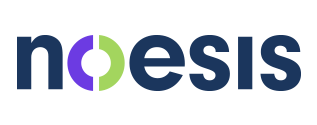Way back in 1996, Jim Collins and Jerry Porras wrote the classic Harvard Business Review article “Building Your Company’s Vision.” In it, they introduced the concept of the Big Hairy Audacious Goal (or BHAG) and it’s still relevant today.
What’s changed over the past 23 years is advancements in brain science that help refine our understanding of how goals are successfully reached.
New York University researcher Emily Balcetis discovered that if a goal feels either too easy or too hard to achieve, our brain isn’t in the optimum chemical state to focus on it. But if a goal holds just the right amount of challenge – not too easy but also doesn’t seem impossible – then the level of excitement in our body peaks.
This means that if we can ensure our goals are challenging enough, we can leverage our brain and body to increase our likelihood of goal success.
Hitting the Sweet Spot
Neuroscientists have likened the part of our brain that focuses on these more important goals to Goldilocks. That’s because this sensitive part of our brain, our Prefrontal Cortex, needs conditions to be ‘just right’ to operate at its best. We call that perfect place the performance sweet spot. If you hit it, your brain loves it. If you miss it, it can sabotage the whole process.
Collins and Porras understood this, even if they didn’t use neuroscience to explain it. Although they promoted setting BHAGs that reached 10 to 30 years out, they didn’t suggest tackling them all at once, but rather breaking them down into smaller, everyday goals, keeping what works and discarding the rest.
“All companies have goals. But there is a difference between merely having a goal and becoming committed to a huge, daunting challenge – such as climbing Mount Everest,” they write.
A goal that is too easy or too hard doesn’t engage our brain’s executive functions. So mental tasks like planning, evaluating and problem solving – all critical for goal achievement – are constrained.
Turning Words Into Pictures
Interestingly, the second component of Collins’ and Porras’ goal-setting strategy outlines the importance of visualization, another brain-friendly hack that helps in goal achievement.
“Think of it as translating the vision from words into pictures, of creating an image that people can carry around in their heads,” write Collins and Porras.
Setting a BHAG doesn’t have to be daunting, but it should be brain-friendly. Updating your Big Harry Audacious Goal with the help of current brain science will help you get there. So, what’s your BHAG?
Noesis delivers neuroleadership consulting and training to organizations handling everyday change and major transformation initiatives. We help our clients scientifically improve leadership.


Recent Comments